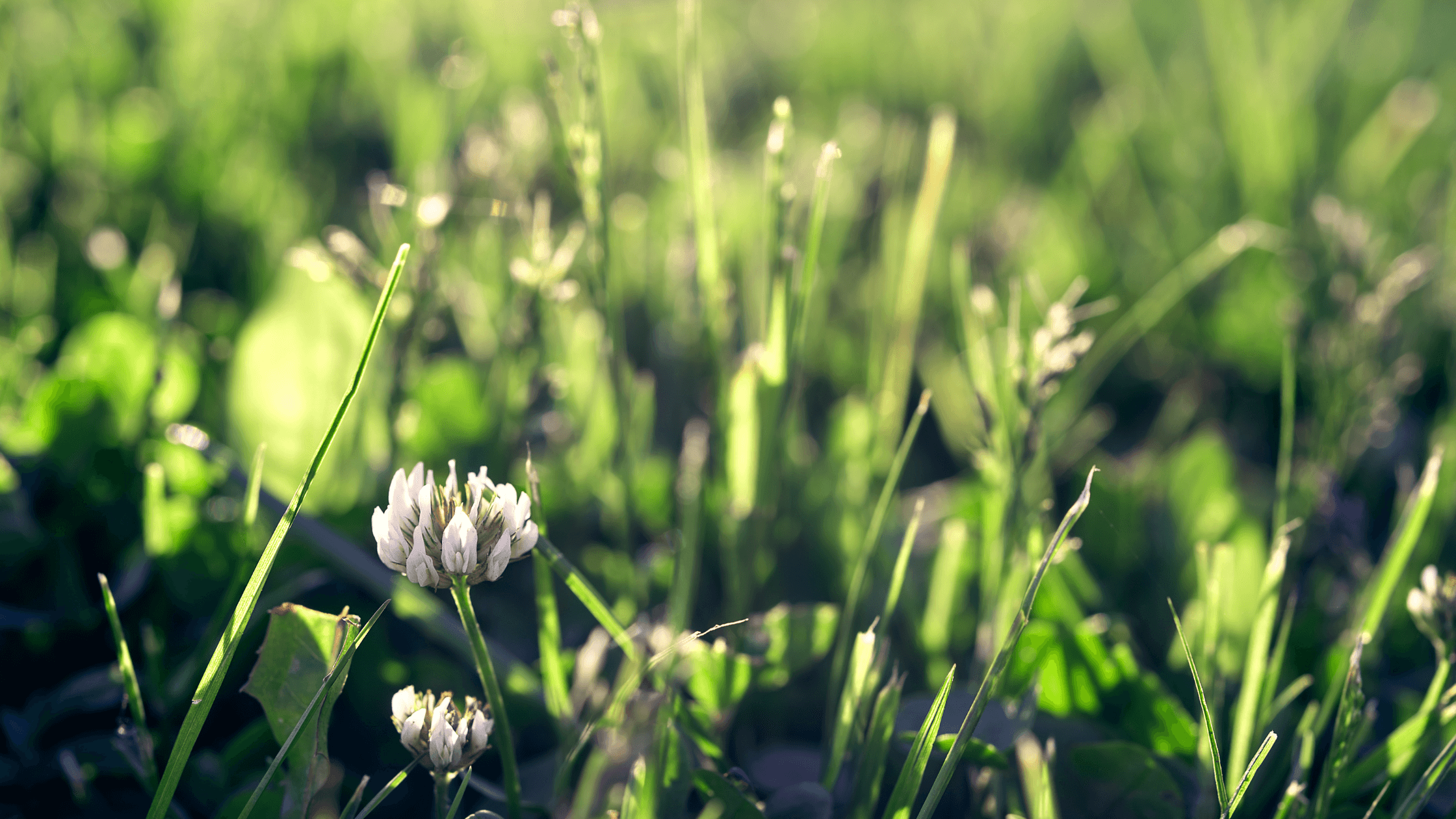Lawn Basics
Traditional lawns are monocultures, requiring a lot of labor, water, carbon, and other inputs, like synthetic fertilizers, to maintain. The U.S., alone, has around 40 million acres of lawn, which uses more chemicals and water than any agricultural crop. Since lawns attract more pest and disease problems than areas with diverse plantings, they are often treated with pesticides. They require even more maintenance when they are inappropriately installed outside of full sun areas, next to houses, and under trees. Why not try an non-toxic lawn care approach, instead? Here’s how.
Reduce Your Lawn
Getting rid of some of your lawn will save money and time. Reduce as much as you can. Increase the size of your existing beds and rethink the areas of your lawn you never walk on other than to mow. Replace these spots with native plants and other beneficial features, like fresh water, shrubs, and trees, to increase biodiversity benefits.
Diversify the Lawn you Keep
Monocultural lawns require more resources to protect them from pests, diseases, and drought. They also provide little to no food for wildlife. Diversify the lawn you have left by using the best turf grass seed mix for your ecoregion, which is adapted to your lawn’s soil and climate conditions.
For example, “low-mow” fescues are ideal for lower maintenance throughout most of the United States. They require much less fertilizer and water and are not as susceptible to insect and disease damage as rye and bluegrass. Avoid turf grass varieties that won’t tolerate higher mowing heights, such as Zoysia grass, which can develop fungal diseases when left to grow tall.
You can also incorporate low flowering native plants like pussytoes, violets, or native clovers where appropriate, to benefit wildlife. Clover, for instance, adds nitrogen to the soil, fills in bare patches, and stays green in hot, dry weather.
Seed Timing
Turf grass seeds germinate in cool weather. Overseed lawns when it’s cool, in the fall or early spring, so the grass seed is established before weeds arrive when the temperature warms and are looking for a bare, sunny spot to sprout. Overseeding established lawns keeps the lawn grass population young and vigorous.
Mowing 101
Keep mower blades sharp
Make clean cuts on your lawn, which allows healing. When blades are dull, they tear at the leaves, which requires more energy to heal, stressing the plant and its root system. You’ll notice when you see ragged edges and white fibers on grass. Sharpen mower blades regularly, approximately once a week..
Mow high
Set your mower blades at 3 inches to 3.5 inches and only mow when grass is dry. (Mowing when the lawn is wet can damage the grass blades, tearing them rather than cutting them cleanly, which can leave clumps of grass to rot on the lawn, causing brown spots and damage.) Mowing higher contributes to deeper root growth, making for healthier, more drought- and grub-tolerant lawns. It also helps to control weeds by shading the soil surface.
When a lawn is cut too short, it will expose the crowns of your grass plants to damage and will also allow more sun for weeds to encroach.
Mulch lawn clippings
When mowing, use sharp mulching blades to ensure organic matter is chopped fine so that the clippings will decompose in the lawn and become valuable nutrients. In autumn, mulch any fallen leaves with mulching blades and leave them on your lawn to feed it.
Aerate
All lawns benefit from occasional aeration to help incorporate oxygen and organic matter into the soil. For high traffic or post-construction compaction, aerate your lawn throughout the growing season with an aerator attachment on your riding mower or a broad fork for aerating by hand. These tools will open space for air without making space for weed seeds.
Equipment
Electric Mowers
Switch to electric. Battery powered equipment produces fewer emissions than 4-stroke and 2-stroke machines.
But note that noise pollution from all engines can still be detrimental to wildlife, neighbors, and the hearing capacity of human applicators. Be mindful when you use any machinery.
Robot Mowers
Powered by rechargeable electric batteries, robot mowers use sensors or underground wires, similar to an electric fence system, to cut your lawn to the parameters you set without needing to push or ride it. They are efficient, controlled via smartphone or computer, with some models equipped with GPS technology.
Read Edwina’s Radicle Thinking about robot mowers.
Irrigation
Wait until the ground is dry (to at least 6 inches deep) or when the lawn shows early signs of wilting (footprints show in lawns when they need to be irrigated) before watering. Irrigating (and fertilizing) too early in the spring (the typical “lawn wake up” treatment) can cause fungal problems later.
Watering long (at least 30 min) and deep (6 inches to 8 inches) encourages deep root growth. Watering for short periods of time (less than 20 minutes) just wets the top few inches, which forces the roots to stay close to the surface, where they get too much sun, dry out faster, and become susceptible to drought, foot and mechanical compaction, and grubs.
When you water too often (more than twice a week) you’re not giving grass
a chance to dry out, which causes fungus problems.
Use a rain gauge, a moisture meter with a foot-long (or longer) probe to gauge how thirsty your lawn is, or install a smart watering system (look for the EPA’s water sense label), which holds off watering if it has recently rained. Set the amount of watering time according to what you’re growing, the soil, the slope, and the light conditions (sun/shade).
Hiring a professional?


